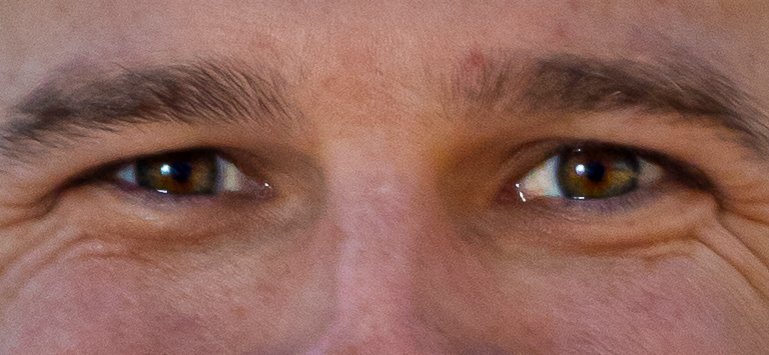Lightroom Tricks for When Your Pictures Aren’t Quite in Focus
Scroll to bottom for TLDR.
Let’s be honest, you will not get 100% of the pictures you take in focus. Even when using an autofocus lens, there are times when it’s just not quite there. Also have you ever taken a portrait and thought it was a total winner when you saw it on the camera, but on the computer realized that you grabbed focus on the tip of the subject’s nose, or their ears, or even their eyelashes instead of their eyes? It happens, and once the shoot is over, you need to work with what you’ve got, but don’t fear, there are some tricks I’ve found you can use in Lightroom to bring back some focus into your pictures.
I’ll start with the obvious, if your picture is totally out of focus, or if you are planning on blowing up the image really big, you’re probably screwed. There is no editing replacement for getting the focus right in camera. You can, however, make your images look a bit more in focus than they actually were especially if they are being used online for something like a social media post or a profile picture or even for smaller physical prints.
An in focus image will have edges that are clearly defined, when the image is out of focus, those edges get smudged and don’t stand out enough. I used to rely on the sharpening slider in Lightroom to bring back some focus to my images, but I found this introduces a ton of noise into my images, especially the low-contrast areas. Some people like a bit of noise in their images, but when there is a lot, especially in areas that should appear smooth, I find it distracting.
Instead, I use the texture and clarity sliders quite often to bring back those hard edges. Sometimes, just pumping a little bit of clarity into your image can be enough, but if a lot is required to make you edges come back, it can make you image look super crunchy and over processed. In these cases, create a brush mask, and go over the edges you want to sharpen up. Then add a good amount of texture and/or clarity to them to make the image appear more in focus. I find clarity more effective, but it quickly make the areas very contrasty and dark, you don’t always want that, hence, use a bit of texture as well.
This trick is really great for portraits where the most in-focus point is not on the eyes. You can paint over just the eyeballs with your mask or also include the eyelashes for some extra pop. Keep in mind that the more clarity you add, the more saturation will get sucked out of the area, so you may need to add some saturation back into your mask to keep it looking natural.
Here is an example of an image where I would do this kind of adjustment.
Not a bad image but, as you can see, this image is not totally in focus. The eyes are not the most in focus part of the image. The bow on top of baby’s head is the most in focus which very subtly draws your attention away from the two subjects. Also, if you zoom in, dad’s entire face is not in focus. Adding these adjustments to the eyes really helps your audience connect more with the photos which helps them stand out.
It’s pretty clear to see the difference between the two. I also added a small amount of exposure and noise reduction to these, but that is not always necessary. You will have to mess around a little bit when you do this because different lighting situations and eye colors may require subtle changes to how you do these edits. This process does not damage the rest of your image at all. It also does not make any other portions of his face in focus, but when the eyes appear in focus, it does not really matter as much if other parts are a bit out of focus. Most audiences won’t event notice. But having the eyes not stand out will be noticed even if it is subconsciously. The eyes are by far the most important part of an image. After doing the same process to baby’s eyes we get this:
Dad appears to be more in focus even though we only did edits to his eyes. Its a small change, but can create big results. This really helps the subjects attract more attention in the image. If you blew this image up really big on a print, you would likely notice the missed focus in other areas of dad’s face much more, but this can help slightly out of focus portraits look good in most scenarios! If you wanted to take this even farther you could add a brush mask to a person’s nostrils, lips/mouth (be careful with this one, it usually only works well if you only put the mask right along the inside edge of the lips) or lines on the face like smile lines or dimples (don’t do this to wrinkles, your subject will hate you). This will not work on any surfaces, only on edges or hard lines, but that is all we really care about when it comes to focus.
Another time I find myself using this is for landscape photos. Usually I am focused to infinity for landscape photos, but a combination of haze in your photos when shooting things that are very far away and the fact that sometimes cheap lenses aren’t quite up to the task can make portions of your image just a bit fuzzy. I run into this a lot when photographing mountains. I want the ridges and peaks to clearly stand out from what’s behind them, whether that be the sky or another mountain. Having tack-sharp, punchy ridges and peaks will help your mountain photos pop. I sometimes will do these types of edits to my landscape shots even when it is totally in focus. It’s just another tool you have to try and influence the viewer’s gaze.
Add a brush mask along the ridges and peaks you want to stand out. This can work for any object you want to stand out that may have fuzzy edges or isn’t commanding enough attention in you image. Careful when using clarity here, it can make the areas you painted over look like dark worms stretched across your frame, especially when the object meets the sky because the clarity will darken the sky as well as the edges. I usually use more texture than clarity in these instances.
Long story short, if you missed you focus, do some work to the edges of objects using brush masks rather than adjusting things on your whole image. A small amount of texture, clarity, or sharpening applied to your whole image can help, but keep it to small doses. The best thing to do is to identify the parts of your image where having good focus is most important (the eyes for portraits), and doing work to the the hard edges of objects. This works the best if there is good contrast in the areas you are doing the work to. For faces specifically, add your brush masks to facial features that provide contrast such as eyes, eyelashes, eyebrows, the inside edges of lips, smile lines, but do not apply them to features that you to not want accentuate such as frown lines, wrinkles, etc. DO NOT APPLY TO SMOOTH SKIN, unless you’re trying to make the person look like a witch. Use clarity, but don’t overdo it and do fine adjustments with texture. Most importantly, don’t make your subjects look weird!
I hope this was helpful! Stay tuned for more.
Denver Photography
Do you need a photographer in or around the Denver area? Get in touch! I can’t wait to hear from you!




